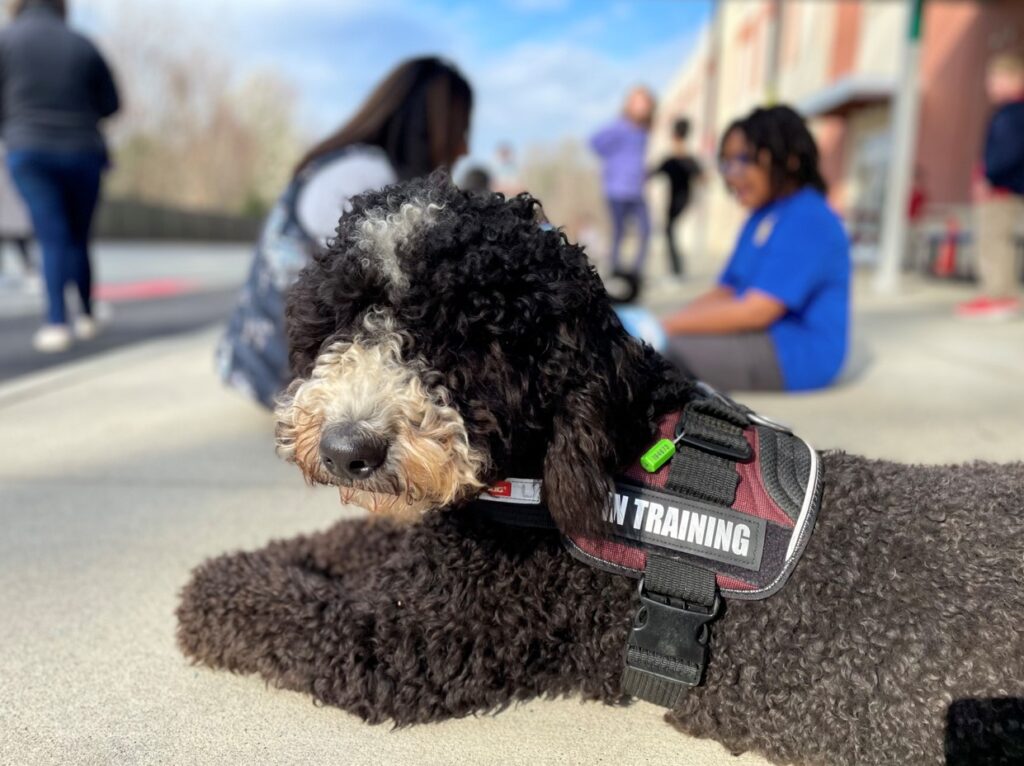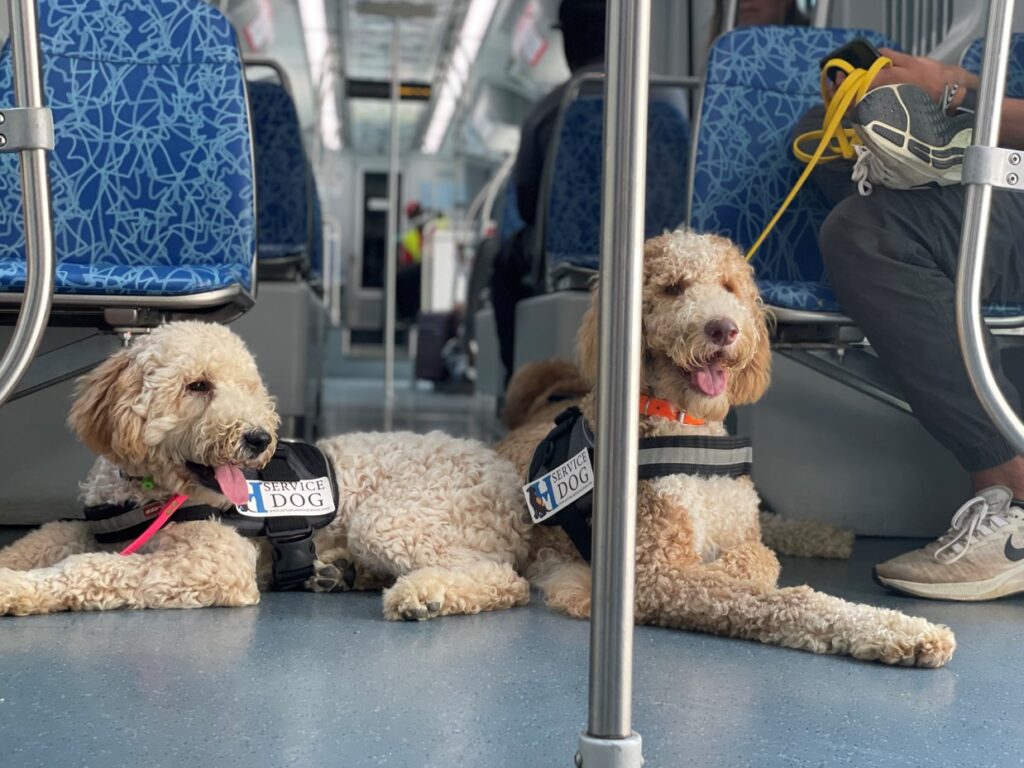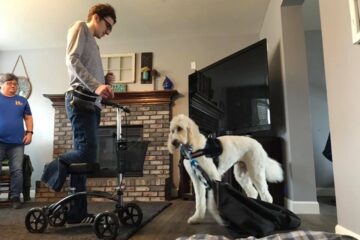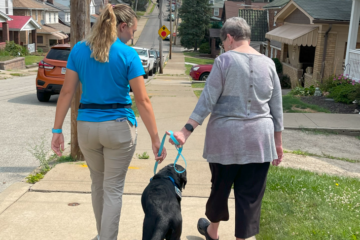If you are a dog lover – as many of us are – it’s hard to pass a dog on the street without thinking about generously petting them and saying a few kind words. However, it’s a different story when it comes to service dogs; they are always on duty. And you cannot treat them like any other puppy you see on the street.
Although there is some knowledge among the wider public about how to behave around service dogs, we have heard enough incidents of inappropriate behavior that we wanted to clarify a few things – so in this article, we’re going to run through how to behave in a variety of scenarios when it comes to service dogs.
Pet Dog & Service Dog: What’s The Difference?
Service dogs receive specialized training to perform a specific task or tasks for a person with a disability. Legally, service dogs are not considered pets under federal law. They are considered assistance animals that people with disabilities need to meet the challenges of daily living. The range of tasks these dogs are capable of is absolutely amazing.
Service dogs receive a variety of specialized training: for example, they learn to guide the blind, alert the deaf, pull a wheelchair, alert and protect a person having a seizure, remind an individual with a mental illness to take their prescribed medication, calm a person with post-traumatic stress disorder (PTSD) during an anxiety attack, and so on.
In short, service animals are working animals, not pets. They are protected by the ADA and are trained to help mitigate a disability. Therefore, they are exempt from the general restrictions that apply to pets.

Should You Pet A Service Dog?
Running up to, petting, scratching, or cuddling a service dog is something you should never do.
Touching or petting a working dog in any way is a distraction and can interfere with its duty as a working animal. Service dogs are there to keep their partner safe. When distracted, they cannot focus on their mission, and their disabled handler could easily be injured as a result.
Please keep in mind that depending on the nature of the disability, service dogs may be the only thing standing between their owner and death; they are literally a lifeline for their handler. It is unforgivable to distract them from their work or duties, even if you have the best of intentions. The owner’s safety, life, and health rest in their paws!
What About Offering Food To A Service Dog?
Giving food to a working animal is an obvious example of distraction. After all, every dog loves food. Offering food to a service dog may seem like a thank you to a hero, but you do not offer drinks to police officers because they are on duty and must remain alert. These friendly companions need to focus on doing their job too.
How Should Your Own Dog Interact With A Service Dog?
The bonds in the dog community are quite strong, and as a pet owner, you have definitely seen it many times – dogs love goofing around with each other. But when it comes to service dogs, you cannot afford the consequences. Working animals are always on the job and don’t need to be distracted by your dog’s sniffing and excited barking.
If you notice a service dog walking toward you, either scoop up your puppy in your arms, change direction, or keep your dog on a short leash to prevent any distraction.

What If A Service Dog Approaches You?
We have talked at length about reducing distractions around service dogs. We should also note that service dogs are trained to perform their respective tasks without getting distracted. For example, most service dog trainers do not ever allow their dogs to pick food off the ground for fear of strengthening their instinctive scavenging behaviors.
But for many reasons, service dogs may lose focus on their task. If you notice a service dog, along with its owner, coming up to you and sniffing or pawing at you, gently inform the owner. This could be an unwanted behavior that indicates the need for more training and correction. Yes, ignoring that bundle of cuteness is hard, but even if the dog is demanding your attention, you should do your best to ignore it.
However, there is one critical exception here. If a service dog approaches you and the handler is not around, don’t just walk away. A service dog without its owner nearby is an alarming sign. If a service dog nudges you with its nose or barks without his owner nearby, there is a good chance that it could be an emergency. In this situation, follow the dog! He may lead you straight to his owner, who may require assistance.
How To Communicate With The Service Dog Handler
We frequently see curious, well-meaning strangers approach the owner of a service dog and ask them questions about their situation. They rarely mean any disrespect, but many of the questions are very personal. Some may even sound rude to the owner. If that’s not convincing enough, remember that most of these questions are technically illegal based on ADA regulations.
If you’re a business owner and someone enters your workplace with a service dog, you will likely recognize them by their focused, disciplined, non-reactive behavior or vest.
The only two questions you may legitimately ask are:
- Is the dog a service animal because of his owner’s disability?
- What duty has the dog been trained to perform?
You may not ask about the person’s disability, medical records, special identification, or training documents for the dog or ask that the dog demonstrate its ability to perform the task. Remember, there is no such thing as ‘service dog papers’.
Service dogs make a big difference in the lives of their owners. However, that doesn’t mean that their owners are always willing to have a conversation with anyone who wants to ask them about their companion. Most of the time, they just want to run a quick errand and go home, just like you. So don’t be offended if the answers are short or non-existent!
Technically, Service Dogs Are Medical Equipment
This may sound a little insulting to animal lovers, but think of the contribution service dogs make to saving human lives. Service dogs are medically like a wheelchair, crutches, or an oxygen tank. They are medically necessary anywhere in public where medical aids are allowed.
That’s also helpful to guide you on how to treat a service dog. You would never walk up to someone you didn’t know and randomly start pushing their wheelchair or talking to an old lady’s cane, would you?

But Remember - Service Dogs Are Loved
You are probably starting to pity the working animals because they have to work all the time and are aware of their owner’s situation. But you don’t really get to see the whole picture.
Service dogs are loved and form a strong bond with their handler. They can play, get treats, let off steam, and run around in huge circles. In almost all cases, they are very well cared for, well-adjusted, highly trained, and totally socialized. And they get a mountain of recognition from their owners for doing their jobs.
Bottom Line
Service dogs play a vital role in maintaining the health and well-being of people with a disability.
Even though it can be tempting to rush up and pet them, it is important to remember the vital role they play in their owner’s life. It is also crucial to explain this to younger children in your family who may not understand the difference between a service dog and a pet dog.



0 Comments